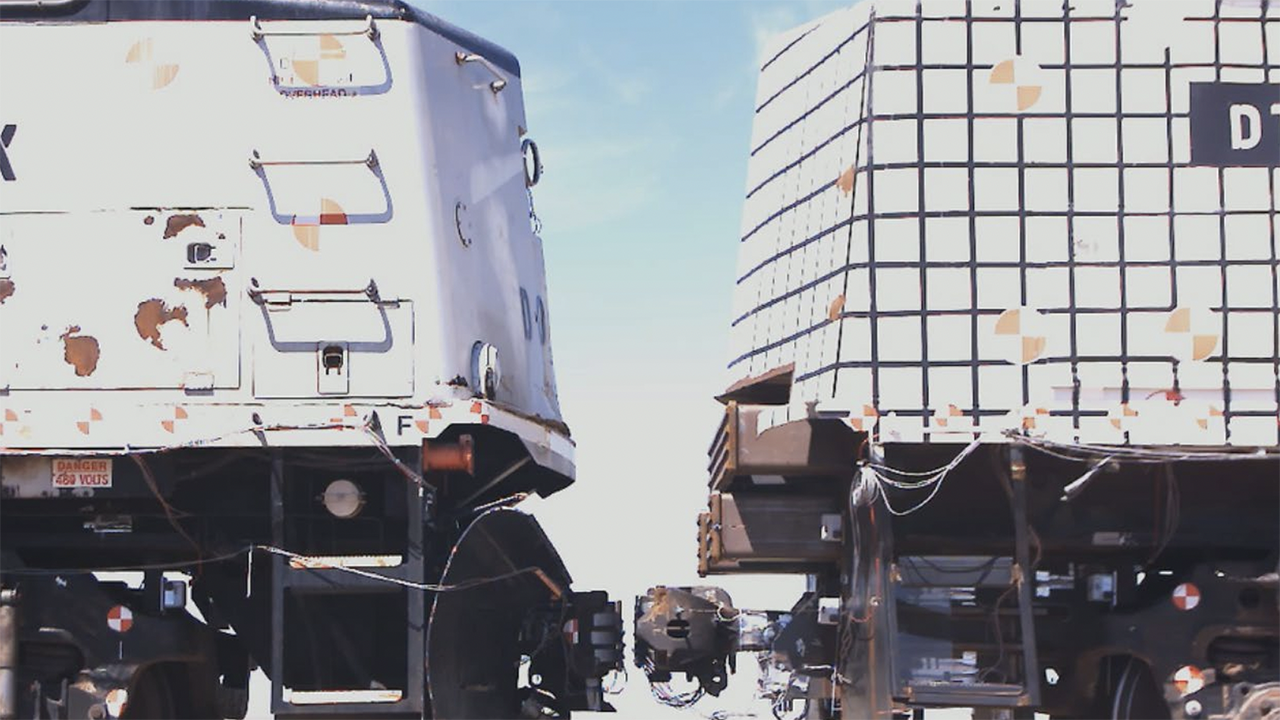
FRA Issues Report on Train-to-Train Impact Test
Written by Marybeth Luczak, Executive Editor
Pre-impact photo of conventional locomotive (left) and CEM locomotive (right). (Caption and Photograph Courtesy of FRA)
The Federal Railroad Administration (FRA) has published the results of its train-to-train impact test evaluating the effectiveness of crash energy management (CEM) components in improving crashworthiness for equipped locomotives in a wide range of potential collisions.
The “Locomotive Crash Energy Management: Train-to-Train Impact Test” report, released March 24 (download below), covers a train-to-train impact test conducted in August 2022 at the Transportation Technology Center in Pueblo, Colo.
In the test, a stationary, conventional F40 locomotive leading two hopper cars was impacted by an F40 locomotive retrofitted with CEM components—a push-back coupler and a deformable anti-climber developed to “work in unison to inhibit override in the event of a collision”—and leading two M1 passenger cars. The primary objective, FRA reported, “was to demonstrate the effectiveness of the CEM system in managing the load path, absorbing impact energy, and inhibiting override and lateral buckling in a train-to-train collision scenario. The target impact speed was 21 mph. The actual speed of the test was 24.3 mph. The impact test resulted in the CEM system working exactly as designed, successfully absorbing energy and keeping the vehicles in-line, with no derailment and no signs of override.”
Next steps in the CEM locomotive research program include comparing the train-to-train test results to the previous vehicle-to-vehicle results, as well as conducting an override study. FRA reported that findings from this research will provide it with information on locomotive crashworthiness alternative compliance.



